
Concept explainers
Draw the products of each reaction.
a. c.
c. 
b. d.
d. 
(a)
Interpretation: The product formed for the given reaction is to be drawn.
Concept introduction: Curved arrows aid in determining the movement and flow of electrons in the reaction. The electrons that take part in the chemical reactions are shown by the curved arrows.
In the sigmatropic rearrangement, the rearrangement of pi bond and the breaking of sigma bond take place. This results in the generation of new sigma bond in the product. In this type of rearrangement, the number of pi bonds remains constant in the reactant as well as in the product.
Answer to Problem 27.52P
The product formed for the given reaction is
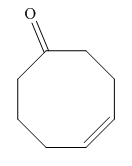
Explanation of Solution
The given reaction is shown below.
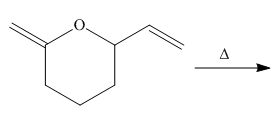
Figure 1
The product formed for the given reaction is shown below.
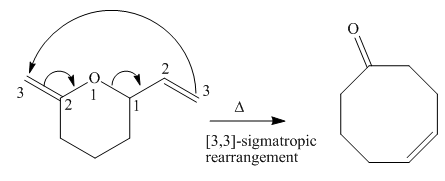
Figure 2
In the given reaction, curved arrows shows the movement of pi bonds to give the final product. In this type of reaction, the compound undergoes to the
Thus, the name of product formed is
The product formed for the given reaction is
(b)
Interpretation: The product formed for the given reaction is to be drawn.
Concept introduction: Curved arrows aid in determining the movement and flow of electrons in the reaction. The electrons that take part in the chemical reactions are shown by the curved arrows.
In the sigmatropic rearrangement, the rearrangement of pi bond and the breaking of sigma bond take place. This results in the generation of new sigma bond in the product. In this type of rearrangement, the number of pi bonds remains constant in the reactant as well as in the product.
Answer to Problem 27.52P
The product formed for the given reaction is

Explanation of Solution
The given reaction is shown below.
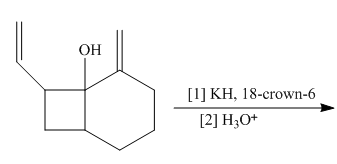
Figure 3
The product formed for the given reaction is shown below.

Figure 4
The first step in the given reaction is the formation of enolate ion. The curved arrows show the movement of pi bonds to give the final product. In the next step, the compound undergoes to the
Thus, the product formed for the given reaction is
The product formed for the given reaction is
(c)
Interpretation: The product formed for the given reaction is to be drawn.
Concept introduction: Curved arrows aid in determining the movement and flow of electrons in the reaction. The electrons that take part in the chemical reactions are shown by the curved arrows.
In the sigmatropic rearrangement, the rearrangement of pi bond and the breaking of sigma bond take place. This results in the generation of new sigma bond in the product. In this type of rearrangement, the number of pi bonds remains constant in the reactant as well as in the product.
Answer to Problem 27.52P
The product formed for the given reaction is
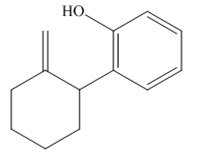
Explanation of Solution
The given reaction is shown below.
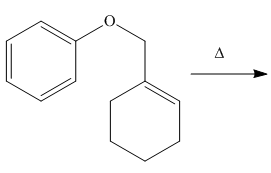
Figure 5
The product formed for the given reaction is shown below.
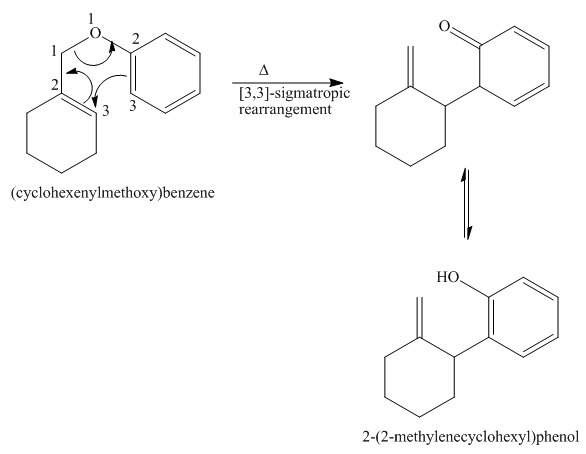
Figure 6
In the given reaction, curved arrows shows the movement of pi bonds to give the final product. In this type of reaction, the compound undergoes to the
Thus, the name of product formed is
The product formed for the given reaction is
(d)
Interpretation: The product formed for the given reaction is to be drawn.
Concept introduction:
Answer to Problem 27.52P
The product formed for the given reaction is,

Explanation of Solution
The given reaction is shown below.

Figure 7
The molecular formula of the product is
The product formed for the given reaction is shown below.
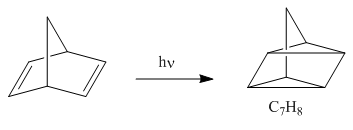
Figure 8
The given reactant undergoes
The product formed for the given reaction is shown in Figure 8.
Want to see more full solutions like this?
Chapter 27 Solutions
ORG.CHEMISTRY W/ACCESS+MODEL KIT PKG
 Organic ChemistryChemistryISBN:9781305580350Author:William H. Brown, Brent L. Iverson, Eric Anslyn, Christopher S. FootePublisher:Cengage Learning
Organic ChemistryChemistryISBN:9781305580350Author:William H. Brown, Brent L. Iverson, Eric Anslyn, Christopher S. FootePublisher:Cengage Learning
